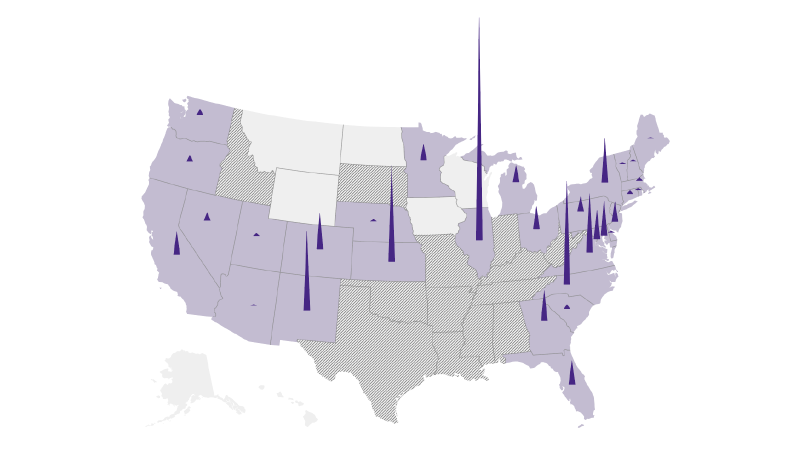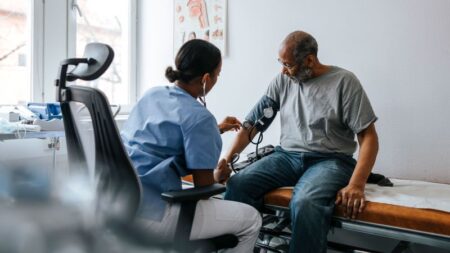In February 2024, Gracie Ladd and her husband faced a harrowing journey that underscored the complexities and emotional toll associated with abortion access in the United States. As they traveled from their southern Wisconsin home to Chicago, the stark Midwestern winter mirrored their tumultuous emotions. At 20 weeks pregnant, Ladd learned that her developing baby had a severe fetal condition deemed “incompatible with life,” presenting an agonizing decision: to continue with the pregnancy could not only jeopardize her health but also lead to unfathomable grief.
Compounding Ladd’s situation was Wisconsin’s restrictive abortion laws, a legacy of a 175-year-old statute that effectively banned the procedure, barring her from obtaining care closer to home. This legal quagmire left Ladd and her family navigating an emotionally charged landscape characterized by fear and uncertainty. Despite the traumatic circumstances, Ladd was forced to take time off work, arrange childcare for their two-year-old son, and undertake a lengthy drive to an unfamiliar healthcare provider, underscoring how legal barriers can exacerbate personal tragedy.
Reflecting on her experience, Ladd expressed the frustration of being unable to access the medical care her providers deemed necessary due to legal constraints. This sentiment resonates with many who find themselves in similar situations, forced to grapple with the policy implications of their health care choices. Her story exemplifies the harsh realities faced by many women in the wake of the U.S. Supreme Court’s Dobbs decision, which revoked the federal right to an abortion in June 2022, creating a fragmented landscape of reproductive healthcare access in the U.S.
Current estimates from the Guttmacher Institute indicate that in 2024, over 155,000 individuals sought abortions across state lines, representing a dramatic increase since 2019. In fact, approximately one in seven people who had an abortion engaged in this cross-state travel, highlighting the significant impact of state laws on reproductive choices. Many of these individuals hailed from states with total abortion bans, such as Texas, where more than 28,000 residents left the state for the procedure, often heading to neighboring states like New Mexico, Kansas, and Colorado for care.
The struggle for those in the Southeast is often magnified by the need to navigate multiple state restrictions, leading to extensive travel requirements. For example, after the Dobbs decision, Florida emerged as a crucial access point for those seeking abortions until a new six-week ban took effect in May 2024. This legislative change resulted in a significant decrease in the number of out-of-state residents traveling to Florida for abortion services, as many were forced to seek care farther away.
Moreover, the socio-political landscape continues to evolve. For example, even with restrictive laws in place, North Carolina saw an influx of individuals from Florida seeking abortions, as the latter’s newly imposed restrictions created a surge in demand for services elsewhere. This interconnectedness highlights the ripple effect that one state’s regulations can have on neighboring regions, complicating the already challenging landscape of reproductive health care access.
Illinois has emerged as a crucial sanctuary for those seeking abortion services, drawing in over 35,000 out-of-state residents seeking care in 2024 alone. This surge can be attributed to the state’s proactive stance toward ensuring abortion access that has garnered support from various stakeholders, including lawmakers, activists, and healthcare providers. The commitment to maintaining abortion services in Illinois reflects a broader trend within certain states to safeguard reproductive rights while many others impose stringent restrictions.
As clinics expand and become more accessible, they’re adapting to accommodate the increased demand for services from out-of-state patients. For instance, the Choices Center for Reproductive Health has recently seen a significant rise in patients coming from states like Texas and Louisiana. Their ability to offer care to individuals arriving from far distances speaks to the clinic’s mission to provide timely and essential services amid a challenging legal climate.
Overall, while telehealth services for medication abortion are rising, partly addressing some of the gaps in access, funding for travel remains limited. As organizations like Choices and Chicago Abortion Fund acknowledge, the financial burden on patients remains daunting; they have had to reduce the support provided for travel expenses due to funding limitations. This complex landscape illustrates the vital need for continued advocacy and support for individuals navigating reproductive health care access, particularly in an ever-evolving legislative context.












